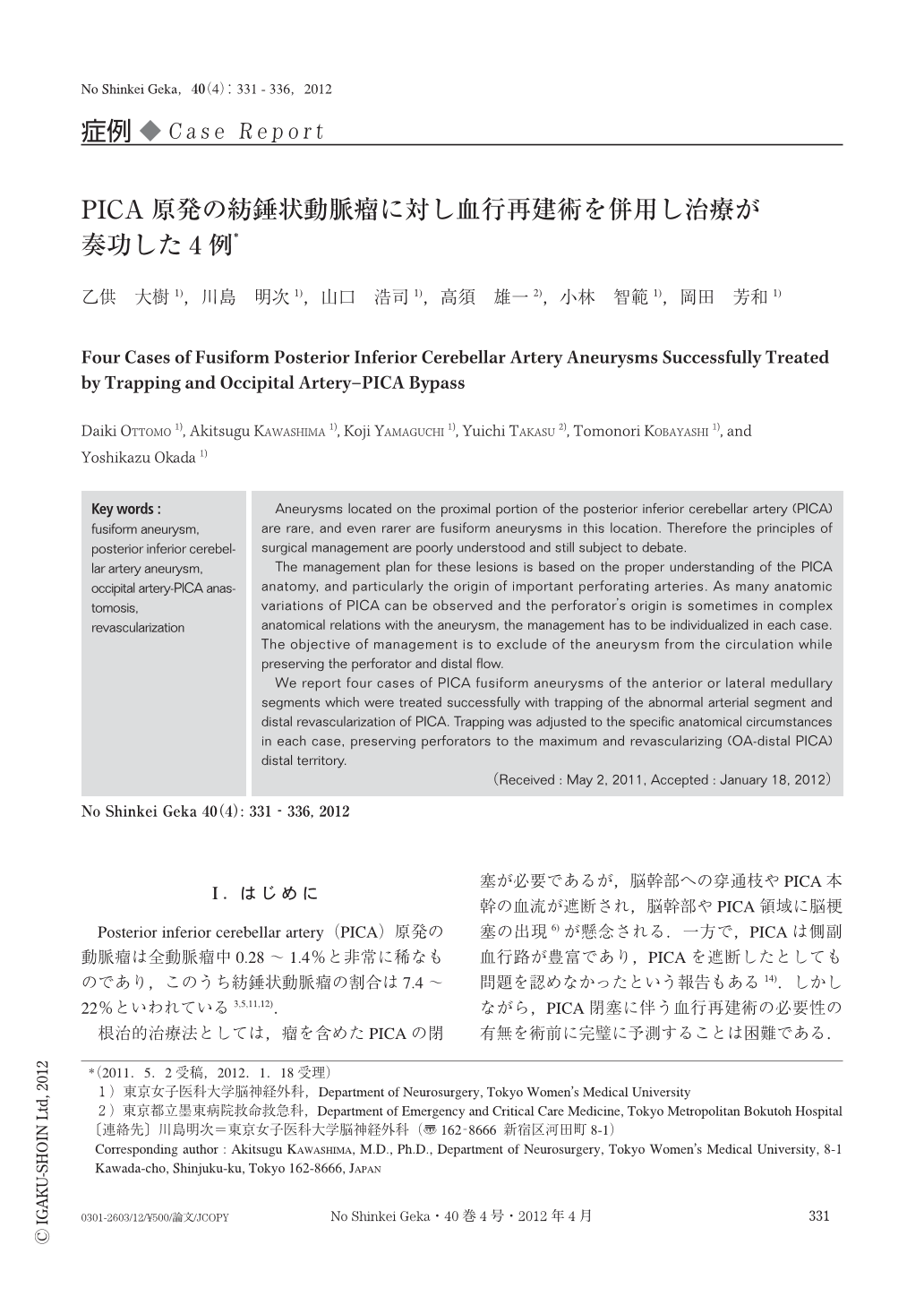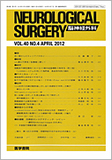Japanese
English
- 有料閲覧
- Abstract 文献概要
- 1ページ目 Look Inside
- 参考文献 Reference
Ⅰ.はじめに
Posterior inferior cerebellar artery(PICA)原発の動脈瘤は全動脈瘤中0.28~1.4%と非常に稀なものであり,このうち紡錘状動脈瘤の割合は7.4~22%といわれている3,5,11,12).
根治的治療法としては,瘤を含めたPICAの閉塞が必要であるが,脳幹部への穿通枝やPICA本幹の血流が遮断され,脳幹部やPICA領域に脳梗塞の出現6)が懸念される.一方で,PICAは側副血行路が豊富であり,PICAを遮断したとしても問題を認めなかったという報告もある14).しかしながら,PICA閉塞に伴う血行再建術の必要性の有無を術前に完璧に予測することは困難である.
今回われわれは,PICA proximal(anterior medullary segment, lateral medullary segment)に局在するPICA原発の動脈瘤を4例経験した.これらに対し血行再建術を併用し,治療が奏功したので文献的考察を加え報告する.
Aneurysms located on the proximal portion of the posterior inferior cerebellar artery (PICA) are rare,and even rarer are fusiform aneurysms in this location. Therefore the principles of surgical management are poorly understood and still subject to debate.
The management plan for these lesions is based on the proper understanding of the PICA anatomy, and particularly the origin of important perforating arteries. As many anatomic variations of PICA can be observed and the perforator's origin is sometimes in complex anatomical relations with the aneurysm, the management has to be individualized in each case. The objective of management is to exclude of the aneurysm from the circulation while preserving the perforator and distal flow.
We report four cases of PICA fusiform aneurysms of the anterior or lateral medullary segments which were treated successfully with trapping of the abnormal arterial segment and distal revascularization of PICA. Trapping was adjusted to the specific anatomical circumstances in each case,preserving perforators to the maximum and revascularizing (OA-distal PICA) distal territory.

Copyright © 2012, Igaku-Shoin Ltd. All rights reserved.


